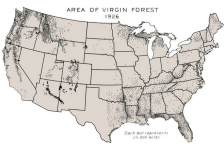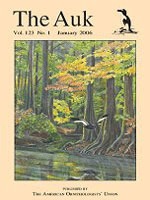Having read a large portion of the previous very lengthy thread with interest, I'd be grateful if someone could offer a knowledgeable opinion on the following:
- Extent of suitable habitat - how does this compare now, across the ivory-bill's range, to when the last birds were unambiguously recorded, back in the mid-1940s?
- Observer coverage/effort - roughly what percentage of suitable habitat would be covered by observers, and roughly how many observers per square kilometre / observer days in the field per year might there likely be?
Regards,
patudo
Patudo,
Much has happened in the last few and 8 decades.
Best to get away from the old acre to modern acre comparison as far as total acres involved. Todays forests have greatly changed for the worse in many ways; I will not cover much here. Ecological changes and fire regimes need to be paramount in understanding IBs. Also alarming is metapopulation gene flow is now minimal but can be improved. The IB is very vagile.
As an indicator something is wrong since forest acreage has remained fairly constant over this time, see:
forest usa
Reality is that you no longer need to consider for survey every suitable IB acre or range. If you know the modern IB's ecology, probable population numbers and behavior, location gen, and have accurately surveyed over 100,000 acres like we have then you already know the best habitat types, and scale of the study areas you need to survey.
Therefore in the past we have found IBs on multiple trips usually requiring a week at each large ecosystem's core area to hear a bird. Trips to areas with large expanses of even age forest < 70 years old, of low DBH and low standing dead wood has all failed. But these areas of over 20,000 acres can not be completely written off since we only spent ~ week in the large areas and only surveyed half the area for example. Statistically you have over a 50% chance of missing the birds even if present. Area thsi alrg eAreas with limited plant community diversity should be avoided unless standing dead wood is substantial. Planted forest should be avoided.
These large areas are presently not covered in any one year by any organized group of IB searchers and accidental/unexpected sightings, ambient DKs and kents are very rarely reported. Regardless there are people there and any population of even 50 birds would likely result in a bird being accidentally seen each year This all says something .
Point being that there are millions of acres of suitable habitat but only the best remaining habitat is presently occupied by only a few birds. There is limited metapopulation gene flow. The breeding phenology of the IBs as a species vis a vis forest carrying capacity has changed; the large fires of 100,000 or more acres that resulted in historical reports of several pairs of IBs in a relatively small area are mostly gone. IB populations a few years after these past events could likely triple on a local level with excess males providing the outbreeding mechanism to keep populations genetically healthy for decades. Excess females in the good times would build the population on the peripheral area of its relatives usually. In this way metapopulations interacted with the entire population blanketing the forest with at least some bird almost everywhere.
Note that much of the SE US forest acreage is privately owned. Some of this is owned by lumber and oil companies, other industries, real estate, hunt clubs, farmers, food/grain companies and private citizens. It can't be searched although you can ask permission or be a persistent and very risky scofflaw to get a look. This is dangerous.
I have seen a few isolated 10,000 acre patches that need searching from top surveyors with advanced search techniques but permission was denied. About 50% of owners minimum, do not want you finding an endangered species on their property. I have also run into a few meth labs while searching. On a private patch that had past IB occupancy we found great signs of very recent IB presence but logging had driven the birds away.
There was extensive logging in LA from both ends of the state that began in 1880 until the sweep was completed in the '40s. By the time they finished of course there were 60 - 80 year old stands somewhere else in the state. Today there are expansive but even aged stands of forest that go on for many, many miles. Look at Dewey Mills for an example.
It is important to know ID (in dike) and OD (out of dike) acreage since cypress habitat (mainly OD) will not provide as much carrying capacity as the second bottoms ecotone that IBs prefer. I bring this up because the Atchafalaya Basin is the largest swamp bottomland left in the USA at ~ 1,000,000 acres but it is partially or mostly Cypress dominated OD. Cypress is protected by natural insecticides and long ago forests of huge trees likely provided sturdy nest holes.
The Choctaw FL IB study found many likely IB roosts in older cypress that no doubt accumulate over centuries. Trees and even better, groups of trees with many holes no doubt make it that much harder for rat snakes to find eggs/hatchlings.
In LA you also get a good input of topped trees and suspended dead wood from hurricanes. The forests are "spooky", crooked and dense in these areas. But as coastal areas are developed the forests most prone to catastrophic tree mortality are under pressure and this prime area for IBs (see Avery Island literature) is attrited.
In summary very little acreage is now correctly covered for IBs but regardless there are likely not many birds if we extrapolate our direct data and bring in other date we feel was done right . The hours and man days to cover the best 10 separate spots that recently had IBs is 20 complete weeks with 4 people/day. That would settle the question or at least bring us up to date.
I

would be shocked if there were no birds left.
thanks
hope that helps








